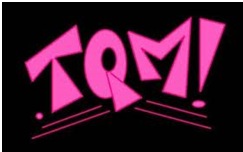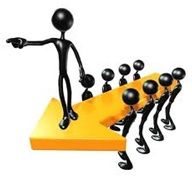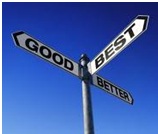|
 |
|
 |
Total quality management
(TQM)
TQM is... Delivering the best possible product to give the best possible customer satisfaction. It can also be applied to non-profit organizations (e.g. schools and hospitals) and is sometimes called total quality control (TQC).
How to make TQM work 1. Start with the customer Every employee must be totally dedicated to the best possible service to customers. Give them the quality they want. This is based on:
2. Set challenging quality objectives Examples are:
Competitors must be beaten, so if they keep on improving, you must do better and better. So TQM has been described as “a race without a finish line”
3. Live quality through leadership Top management must clearly communicate TQM and inspire every employee to make it work. A corporate culture is vital in which every employee lives for quality and instinctively strives to delight customers.
4. Empower quality people
a) managers and supervisors must give up power so that everyone can take responsibility for quality.
b) recruit the right people with the right attitudes.
c) fear must be replaced by psychological security (without complacency) and pride of workmanship.
d) prevention through self-regulation in teams is more effective than inspection (so TQM is based on Douglas McGregor’s ,pictured right, Theory Y management).
e) use quality circles - teams of 5 to 10 people that voluntarily take responsibility for quality 5. Continuous improvement (kaizen) Every employee must continually improve, so these things are vital:
6. Seek simplicity The objective should be total customer satisfaction reached in the easiest and quickest possible way. Processes and procedures should be simplified and anything unnecessary eliminated (e.g.
reductions in product parts and improvements in the movement of materials). Everything in an organization must help to achieve quality and customer satisfaction. For example, don’t ask ‘how can we make the office more efficient with IT?’, but ‘do we need the office anyway?’
7. Look at your systems and suppliers Schemes for quality systems like ISO9000 are often useful, but systems aren’t enough. You need great people to make them work better. Long-term collaboration with suppliers is also vital to increase their quality and speed of delivery. This is why TQM is usually linked to just-in-time, where supplies are delivered when needed.
8. Cross-functional co-operation Different functions or departments (e.g. marketing and production) must work together to achieve total quality. So cross-functional teams (with people from different departments/functions) are very important.
9. Lean and flexible production Production must adapt extremely quickly to changes in customer requirements. Lean production (first used by Toyota) results in:
10. Patience An organization will take time (at least three years) to make TQM work, because it requires major changes in people’s attitudes.
Key quotes explained
“Inspection is too late” - W. Edwards Deming , American quality expert (pictured right) TQM is about the prevention of problems (not inspection) and the constant search for improvement, even when things seem to be going well. “Because nothing’s wrong doesn’t mean everything is right”, Edwards Deming also said.
“TQC is not a miracle drug. Its properties are more like that of Chinese herb medicine” - Kaoru Ishikawa, Japanese quality expert (pictured right) TQM (or TQC) takes time, because it needs a revolution in the attitudes of management and workers.
“Quality is what the customer says it is” - Armand Feigenbaum (American quality expert, pictured right) Quality requirements depend on what customers want and what they’re going to use the product for. “Quality is simply giving people the product or service they really want and need”, the American management writers, Kenneth Blanchard and Spencer Johnson said.
“Quality means doing it right when no one is looking” - Henry Ford , American car maker (pictured right) TQM requires self-regulation and empowerment (taking responsibility for quality). Every employee must instinctively strive for the maximum effort and performance. “Quality is not an act, it is a habit”, Aristotle, the Greek philosopher, said.
Best books
W. Edwards Deming, Out of the Crisis (1986) With another American quality expert, Joseph Juran (see below), Deming introduced TQM to the Japanese in the early 1950’s. Deming outlines 14 points to achieve the best quality. These involve:
1. Customer satisfaction and continuous improvement in everything.
2. Self-regulation (a big change in management away from supervision and inspection to co-operation and self- regulation in groups).
3. Employee motivation and empowerment (from pride of workmanship and driving out fear).
4. Inspirational leadership (through courage, trust and integrity, training, education and statistical control).
5. Breaking down barriers between functions.
6. Long-term relationships with suppliers. (See for more detail Out of the Crisis in the Business Books section).
Joseph Juran (pictured right) , Juran on Planning for Quality (1988) Three things give the best quality (Juran’s quality trilogy):
1. Quality planning (a strategy for quality must satisfy customers).
2. Quality control (making sure employees have the responsibility to achieve quality).
3. Quality improvement (continuous improvement).
Juran placed an even greater emphasis than Deming on people and on treating them well. Poor quality costs money (20-40% of sales revenue) and is more the result of poor management than poor workmanship on the shop floor.
Philip Crosby (pictured right) , Quality Is Free (1979) The book’s message is in the title. Total quality saves money through zero defects, less waste, fewer customer complaints and less money spent on after-sales service and correcting mistakes.
Robert Buzzell (pictured right) and Bradley Gale (pictured right below) , The PIMS Principles (1987) PIMS ( the Profit Impact of Market Share) was a research study of 450 American companies which found that quality is the most important source of competitive advantage and profitability.
|
|
|
||
|
|
|
||
|
||
| Copyright © wisdomtowin.com All Rights Reserved | ||
|


















